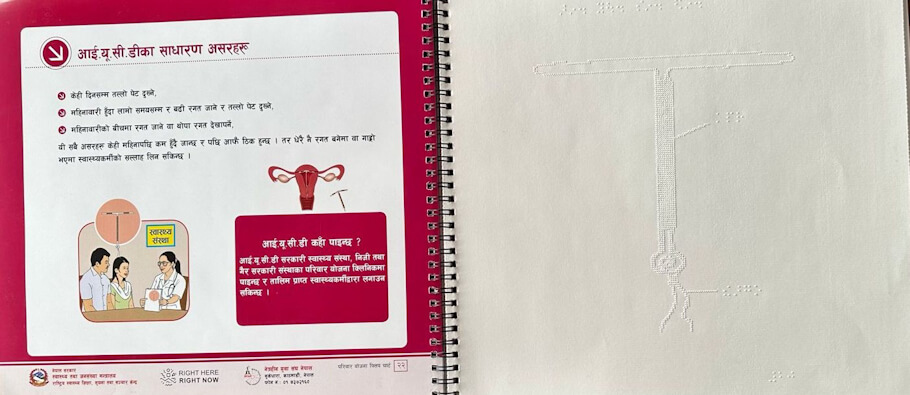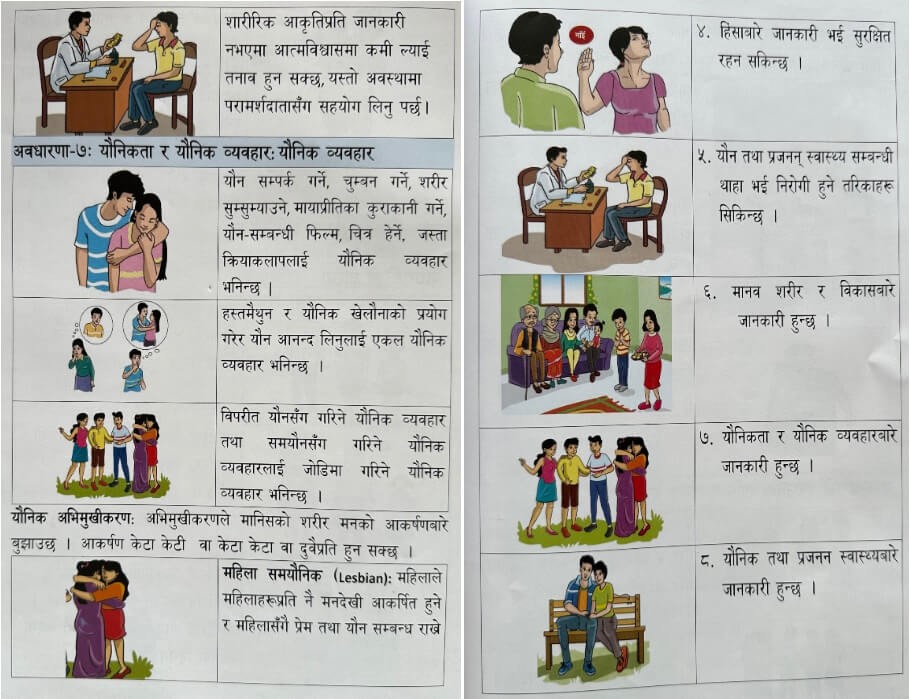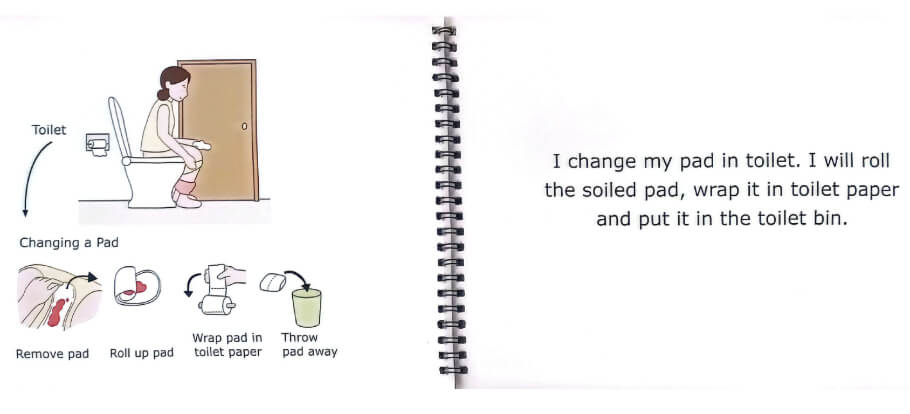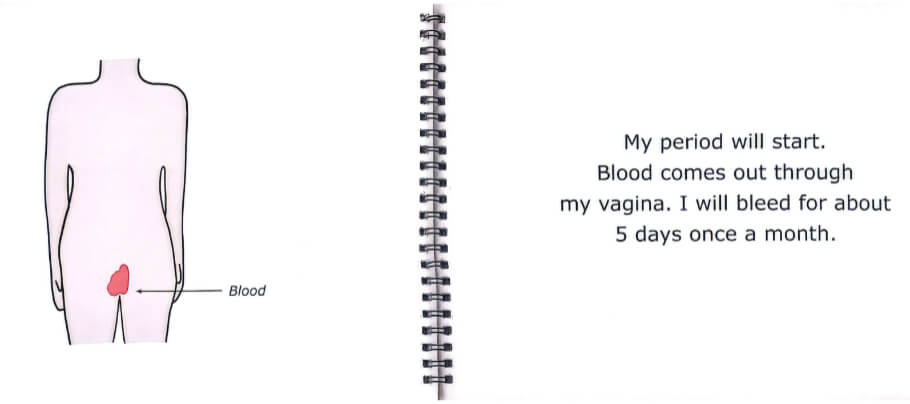The Vital Role of Inclusive IEC Materials in Delivering CSE to Students with Disabilities
Author: Jaldeep Sapkota
Published: 2025/06/04
Publication Type: Literature / Review
Category Topic: Disability Sexuality - Related Papers & Publications
Page Content: Synopsis - Introduction - Main - Insights, Updates
Synopsis: This article highlights the critical importance of accessible Information, Education, and Communication (IEC) materials in ensuring that students with disabilities can fully participate in Comprehensive Sexuality Education (CSE). It underscores that accessible IEC tools - such as Braille flipcharts, tactile models, easy-to-read booklets, and Picture Exchange Communication (PEC) tools - are not merely supplementary aids but foundational resources that enable equitable learning, foster autonomy, and protect the rights of young people with disabilities.
The article draws on the innovative work of the Blind Youth Association Nepal (BYAN), which, under the Right Here, Right Now (RHRN) initiative, has developed multi-format CSE materials tailored to diverse needs, ensuring that no student is left behind. Through testimonials from students and parents, the article demonstrates how these resources make complex topics understandable, promote active participation, and support lifelong learning and advocacy, making it especially relevant for educators, policymakers, and advocates working with seniors or people with disabilities - Disabled World (DW).
Introduction
When Accessibility Means Empowerment: The Vital Role of Inclusive IEC Materials in Delivering CSE to Students with Disabilities
In an era where inclusion is no longer optional but a fundamental human right, the need for accessible Information, Education, and Communication (IEC) materials for students with disabilities cannot be overlooked, especially in the context of Comprehensive Sexuality Education (CSE). These materials are far more than just educational tools; they are a lifeline, empowering young people to understand their rights, make informed choices, and lead lives of dignity.
Main Content
What Are IEC Materials?
Information, Education, and Communication (IEC) materials are tools designed to enhance learning by combining educational content with engaging elements such as visuals, audio, or tactile components. These include flipcharts, brochures, videos, tactile models, and more, crafted to make learning interactive, inclusive, and accessible.
Understanding Comprehensive Sexuality Education (CSE)
Comprehensive Sexuality Education (CSE) is a curriculum-based approach that addresses the cognitive, emotional, physical, and social aspects of sexuality. As defined by UNESCO's International Technical Guidance on Sexuality Education (ITGSE), CSE aims to equip children and young people with the knowledge, skills, attitudes, and values that empower them to realize their health, well-being, and dignity. It promotes respectful relationships, informed decision-making, and the protection of human rights throughout life.
Grounded in human rights, gender equality, and scientific evidence, CSE is transformational, especially when made accessible to those historically left out of these essential conversations, including persons with disabilities.
The Crucial Link: Accessible IEC and Inclusive CSE
CSE empowers individuals to understand their bodies, relationships, and rights. But for students with disabilities, especially those with visual, intellectual, or developmental impairments, mainstream approaches to CSE often exclude them entirely. The absence of accessible IEC materials leads to double marginalization: once due to disability, and again due to inaccessible information.
Why Accessibility Matters?
For students with disabilities, accessible IEC materials are not supplementary, they are foundational to exercising their right to education. By catering to diverse needs, these materials make learning not just inclusive but transformative. Here's how:
1. Equity in Learning
Accessible IEC tools such as Braille, large print, tactile models, and audio-visual aids ensure that every student, regardless of disability, can access vital information. They level the educational playing field and foster equal participation.
2. Empowerment Through Knowledge
From tactile models of family planning tools for visually impaired youth to easy-to-read flipcharts for students with intellectual disabilities, accessible materials provide students with meaningful, hands-on learning. This nurtures autonomy, confidence, and decision-making skills.
3. Social Inclusion and Participation
Inclusive IEC tools allow students with disabilities to fully engage in discussions and classroom activities. In CSE sessions, these materials enable active participation, allowing students to express their opinions, ask questions, and advocate for themselves.
4. Protection and Advocacy
Accessible CSE materials play a crucial role in safeguarding students. For example, autism-specific Picture Exchange Communication (PEC) tools use clear visuals to teach concepts like consent, personal boundaries, and private body parts - critical for protecting students from exploitation and abuse.
5. Promoting Lifelong Learning
Beyond classroom walls, accessible IEC materials inspire students to continue learning, advocate for themselves, and engage confidently in society. They nurture the skills and resilience needed for lifelong empowerment.
BYAN's Innovative Approach: Making CSE Truly Inclusive
Under the Right Here, Right Now (RHRN) initiative, the Blind Youth Association Nepal (BYAN) has pioneered the development of innovative, accessible IEC materials tailored for young people with disabilities. These include:
1. Braille Family Planning Flipcharts with Tactile Images
Enabling blind and low-vision youth to explore family planning options through touch and text.

2. Easy-to-Read Booklet on CSE
Simplified language and clear visuals make these ideal for individuals with intellectual or developmental disabilities.

3. Picture Exchange Communication(PEC) Tools

Designed for children with autism, these visual-based materials teach essential topics such as menstruation, privacy, and body autonomy.

4. Tactile Family Planning Models
Help youth with visual impairments understand abstract reproductive health concepts in a tangible way.
5. Multi-Format Materials
Available in Braille, large print, audio, and video to ensure no young person is left behind.
Voices from the Ground:
The impact of these inclusive materials is best captured through the words of those who use them:
“The tactile models and Braille flipcharts made learning clear and meaningful. For the first time, I felt I could fully understand these important topics without someone explaining everything verbally.” Student with visual impairment
“The simple language and pictures made everything easy to follow. I feel like I understand more now than I ever did before.” Student with intellectual disability
“These PEC materials help me better understand my child's needs. They're not just educational, they're a bridge to connection and proper development.” Parent of a child with autism
Conclusion:
The journey toward inclusive CSE is ongoing, but the path is becoming clearer. We must listen to the voices of those who have long been unheard. We must design classrooms, curricula, and communities that prioritize accessibility, not as an afterthought, but as a foundation. Because when information is made accessible, empowerment becomes universal.
About the Author
Jaldeep Sapkota is a visually impaired youth advocate from Nepal, committed to advancing disability rights and inclusive development. Currently pursuing a Bachelor degree in Major English and Social Work at St. Xavier's College, he bridges academic knowledge with grassroots activism to promote equity and accessibility for persons with disabilities. Jaldeep's advocacy focuses on digital accessibility, road safety, and inclusive sexual and reproductive health and rights (SRHR). As a Comprehensive Sexuality Education (CSE) Champion at Blind Youth Association Nepal, he works to dismantle societal barriers and champion inclusive education and services. Through his work, Jaldeep envisions a world where dignity, autonomy, and equal opportunity are upheld for all.